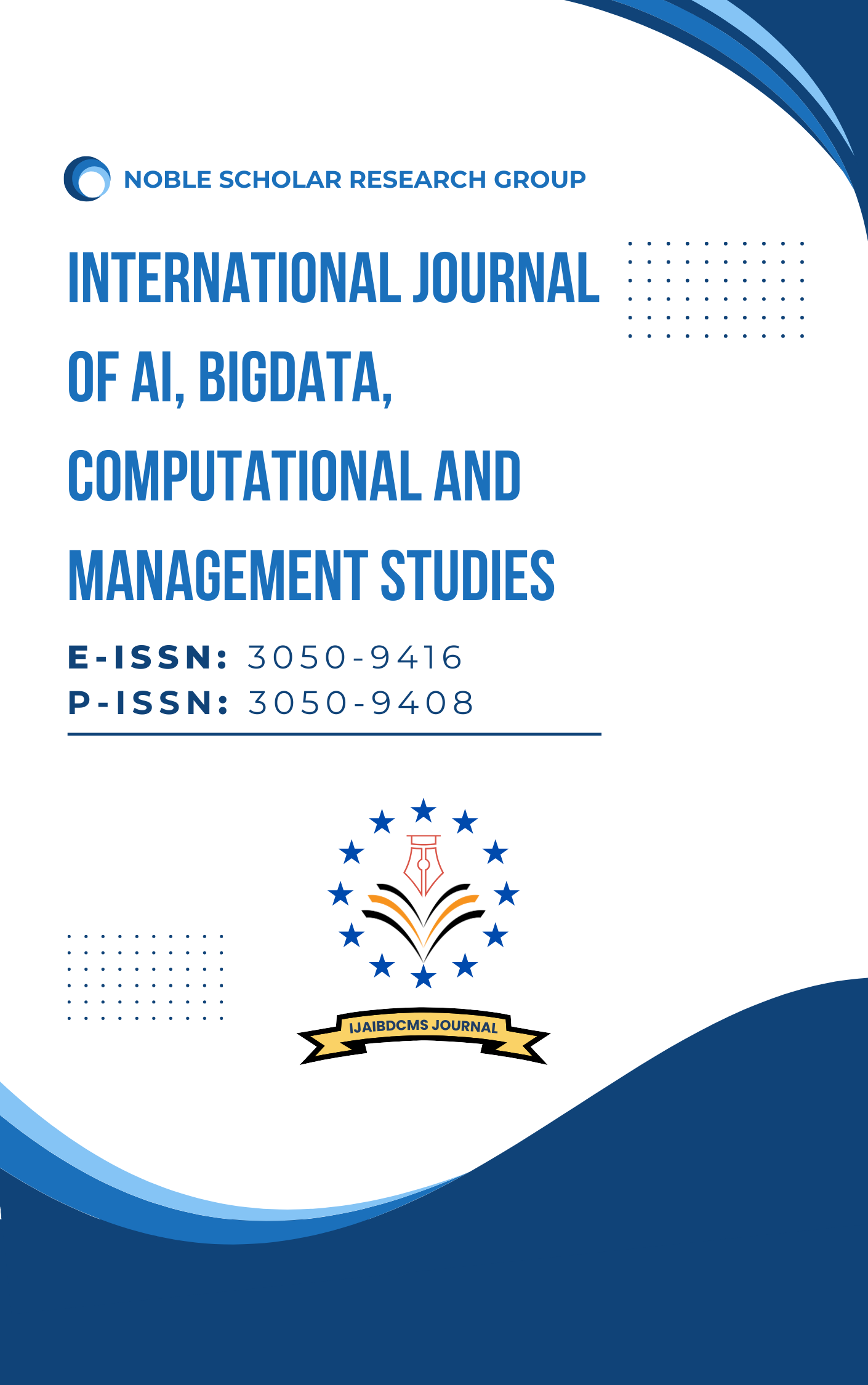Telemedicine Platform Integration: Scalable Architectures for Remote Healthcare Delivery
DOI:
https://doi.org/10.63282/3050-9416.IJAIBDCMS-V2I2P110Keywords:
Telemedicine Integration, Remote Healthcare Delivery, Healthcare Interoperability, HL7 FHIR, Remote Patient Monitoring, Cloud-Native Architecture, Microservices, Event-Driven Systems, Health IT Infrastructure, EHR Integration, API Mediation, Elastic Scalability, HIPAA Compliance, Digital Health, Telehealth PlatformsAbstract
Telemedicine has also been developed in response to the growing worldwide need for accessible and remote healthcare, particularly since the COVID-19 outbreak. Nevertheless, the incorporation of telemedicine systems with legacy care delivery systems leads to significant architectural, operational, and interoperability issues. In particular, this paper presents integration patterns to scalably extend telemedicine solutions by making them compatible with today's healthcare infrastructures, including Electronic Health Records (EHRs), Health Information Exchanges (HIEs), and clinical workflow engines. The main technical contributions of the study are three. First, it provides a detailed examination of telemedicine-interoperable standards, including HL7 FHIR (Fast Healthcare Interoperability Resources), DICOM, and SNOMED CT, which are indispensable for the smooth exchange and sharing of clinical context data. Second, it presents a model for integrating telemonitoring tools of this kind, as well as patient follow-up systems, such as home diagnosis tools and wearable health devices, as essential components of clinical activity through edge computing and secure API mediation. Third, the study provides an architectural blueprint for increasing telehealth capacity by 200% and enables scaling (up and down) via elastic cloud-native microservices, container orchestration, and event-driven architectures. The approach involves developing a hybrid cloud-based integration platform that utilizes Kubernetes, Apache Kafka, and FHIR APIs to simulate surge scenarios and evaluate the integration by measuring latency, throughput, and user concurrency under these scenarios. The analysis confirms measurable reductions in response times and an improved load distribution across the system, demonstrating the suitability of the proposed approach. The conversation consolidates considerations for practical implementation, particularly in rural and remote areas, where concerns related to network stability and infrastructure capacity add another layer of uncertainty. They also mitigate governance and security concerns with layered access control, identity federation, and compliance with HIPAA and GDPR. This paper argues that strong telemedicine integration can be realized through standardized interfaces, modular design, and scalable cloud-native infrastructure. This holds the potential to enable the continuation of care, refine clinical judgment, and facilitate equitable and secure growth in remote healthcare provision. It is anticipated that these findings will inform healthcare IT architects, policymakers, and solution developers in the development of digital health platforms
References
1. M. J. Field and J. Grigsby, "Telemedicine: a new health care delivery system," Annual Review of Public Health, vol. 23, pp. 437–453, 2002. Doi: 10.1146/annurev.publhealth.23.100901.140935
2. J. Adler-Milstein and A. K. Jha, "HITECH Act drove large gains in hospital electronic health record adoption," Health Affairs, vol. 36, no. 8, pp. 1416–1422, 2017. Doi: 10.1377/hlthaff. 2016.1651
3. J. C. Mandel, D. A. Kreda, K. D. Mandl, I. S. Kohane, and R. B. Ramoni, "SMART on FHIR: a standards-based, interoperable apps platform for electronic health records," Journal of the American Medical Informatics Association, vol. 23, no. 5, pp. 899–908, 2016. doi: 10.1093/jamia/ocv189
4. S. R. Steinhubl, E. D. Muse, and E. J. Topol, "The emerging field of mobile health," Science Translational Medicine, vol. 7, no. 283, pp. 283rv3–283rv3, Mar. 2015. Doi: 10.1126/scitranslmed.aaa3487
5. T. M. Gajarawala and J. N. Pelkowski, "Telehealth benefits and barriers," Journal for Nurse Practitioners, vol. 17, no. 2, pp. 218–221, Feb. 2020. doi: 10.1016/j.nurpra.2020.01.013
6. N. Gruschka, M. Miettinen, M. S. E. Khan, and T. Strufe, "Privacy issues and data protection in big data: a case study analysis under GDPR," Computer Law & Security Review, vol. 36, p. 105367, Nov. 2020. Doi: 10.1016/j.clsr.2020.105367
7. Y. Guo, W. Li, L. Zhang, and Y. Yu, "Performance evaluation framework for telemedicine systems in public health emergencies," Telemedicine and e-Health, vol. 26, no. 10, pp. 1215–1222, Oct. 2020. doi: 10.1089/tmj.2020.0101
8. S. Keesara, A. Jonas, and K. Schulman, "Covid-19 and health care’s digital revolution," New England Journal of Medicine, vol. 382, no. 23, pp. e82(1)–e82(3), Jun. 2020.doi: 10.1056/NEJMp2005835
9. H. Shen and L. Tang, "Secure data transmission in telehealth systems: A layered architecture using TLS and OAuth 2.0," IEEE Access, vol. 8, pp. 168383–168393, 2020. doi: 10.1109/ACCESS.2020.3023384
10. R. L. Wootton, "Telemedicine: A cautious welcome," BMJ, vol. 313, no. 7069, pp. 1375–1377, Dec. 1996. Doi: 10.1136/bmj. 313.7069.1375



